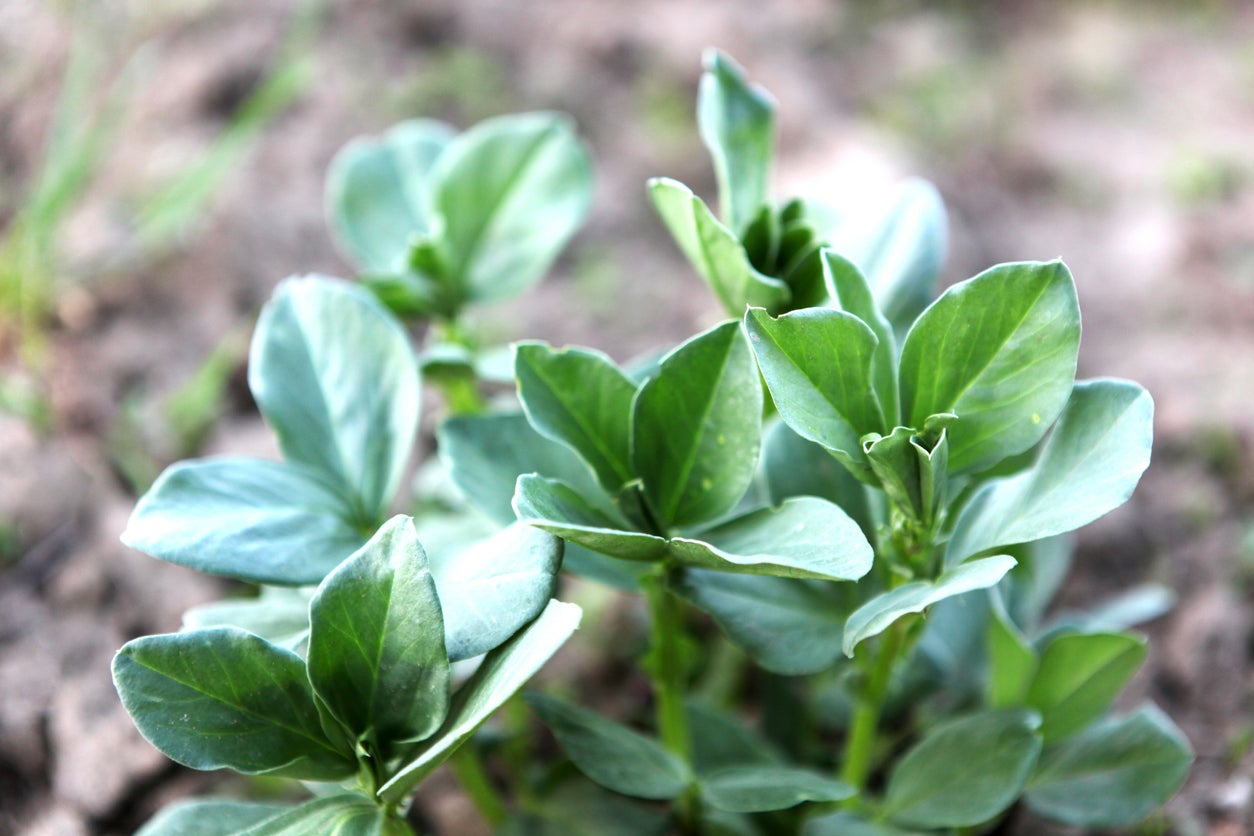Growing Fava Greens: Eating The Tops Of Broad Beans

Fava beans (Vica faba), also referred to as broad beans, are delicious, large beans in the family Fabaceae, or pea family. Like other peas or beans, fava beans impart nitrogen into the soil as they grow and as they decompose. The beans are a staple ingredient in many cuisines but what about the fava greens? Are broad bean leaves edible?
Can You Eat Fava Bean Leaves?
Most growers of fava beans probably never even thought about eating the tops of broad bean plants, but it turns out that, yes, broad bean leaves (aka: greens) are, indeed, edible. The wonders of fava beans! Not only does the plant provide nutritious beans and amend the soil with nitrogen, but the fava greens are edible and absolutely delicious too.
Eating the Tops of Broad Beans
Fava beans are cool-season veggies that are extremely versatile. Generally, they are grown as storage beans. The pods are allowed to mature until the shell turns hard and brown. The seeds are then dried and stored for later use. But they can also be harvested young when the entire pod is tender and can be eaten, or somewhere in between when the pods can be shelled and the beans cooked fresh.
The leaves are best when harvested young and tender where the new leaves and blossoms are emerging at the top of the plant. Snip off the top 4-5 inches (10-12.5 cm.) of the plant for use in salads, much like young spinach leaves. If you wish to cook the fava greens, use the lower leaves and cook them as you would other greens.
The tender young leaves from the top of the plant are sweet with a slight buttery, earthy taste. They can be eaten raw or cooked, and are excellent when made into a fava green pesto. The older greens can be sautéed or wilted as you would spinach and used exactly the same way in egg dishes, kinds of pasta, or just as a side dish.
Gardening tips, videos, info and more delivered right to your inbox!
Sign up for the Gardening Know How newsletter today and receive a free copy of our e-book "How to Grow Delicious Tomatoes".

Amy Grant has been gardening for 30 years and writing for 15. A professional chef and caterer, Amy's area of expertise is culinary gardening.
-
 Looking For Plants To Give You The Soft And Fuzzies? Try These 5 Fuzzy Leaf Plant Options
Looking For Plants To Give You The Soft And Fuzzies? Try These 5 Fuzzy Leaf Plant OptionsLovers of texture, drama, silver foliage and tactile plants will adore these special sensory garden additions. These fuzzy leaf plant options will leave you all aglow
By Susan Albert
-
 Get Ready For A Summer Of Hummers! Grow These Full Sun Hummingbird Plants and Flowers
Get Ready For A Summer Of Hummers! Grow These Full Sun Hummingbird Plants and FlowersIf you’re lucky enough to enjoy a sunny backyard, make sure you are maxing out on your pollinator opportunities and grow these full sun hummingbird plants and flowers
By Tonya Barnett